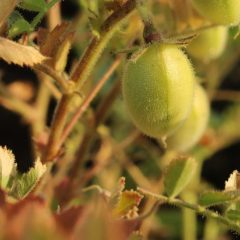Research project Calendula: a golden opportunity!

General introduction
Marigold or Calendula officinalis belongs to the Asteraceae. It originates from the Mediterranean area and is cultivated for its flowers and seeds. The flowers have a high concentration of faradiol, which can be used in cosmetics and pharmaceutical products. Also the seed oil has interesting properties. The calendic acids extracted from seeds can be used as a renewable resource in the paint industries. In this project we aim to asses the potential of the different cultivars available, to optimize the double purpose cropping system, to develop a flower harvesting machine, to create a profitable market for the seed and the oil. Finally we aim at farmer adoption of calendula as an alternative crop.
Research approach
The feasibility of the cultivation and valorisation of the marigold cultivation is tested on the one hand on a micro scale (testing of varieties, picking regimes, ...) and on the other hand on a macro scale where a flower picking machine is developed. Tests are being carried out on a larger scale at the farm of interested farmers who produce larger quantities of flowers and seeds, which are then used to test various valorisation trajectories together with the processing industry.
Relevance/Valorization
Marigold fits perfectly within the framework of the biorefinery where the various components in the flower or seed are extracted and valorised. The flower oil finds its application in pharmacy and the cosmetics. The polar phase of the flowers finds its application in the textile as natural paint. The seed oil is used in the paint industry or possibly in the textile industry. The crop offers perspectives for Flemish agriculture. It fits in a crop diversification. The consortium of PC Herent, Eco Treasures and ILVO are currently exploring the technical and economic feasibility of this cultivation, in close consultation with the various stakeholders.
Financing
VLAIO







